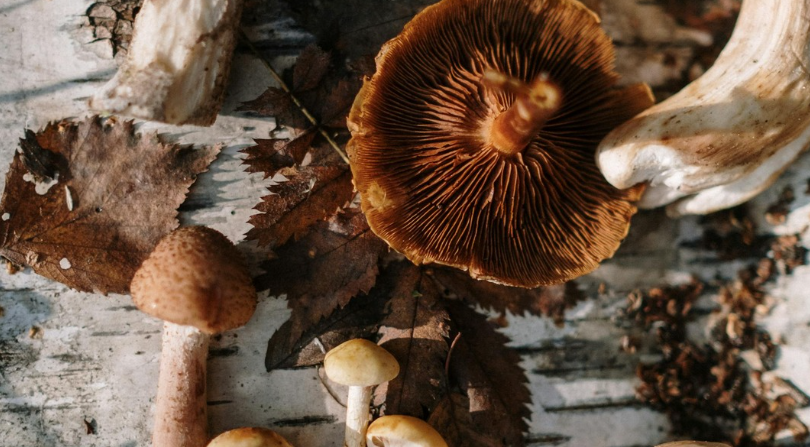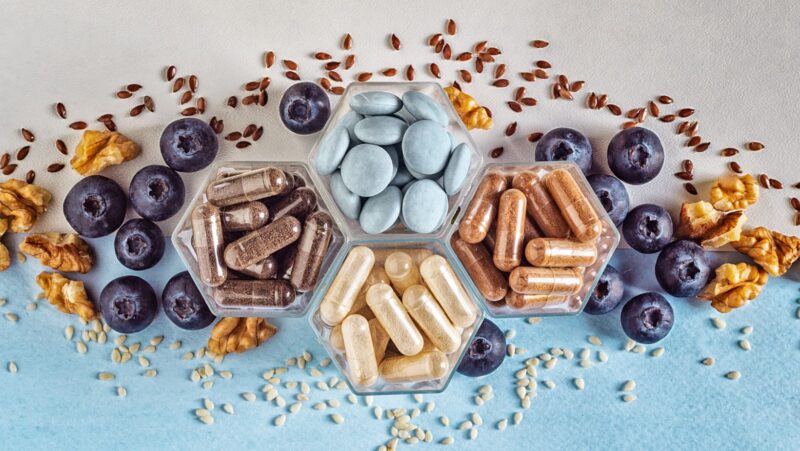
The knowledge of weed consumers on THC and CBD varies, with some having a clear understanding while others may have misconceptions. According to the Forbes Health survey, 45% of respondents in the U.S. believe that consuming CBD is socially acceptable while consuming THC isn’t.
When planning to buy marijuana online at https://getloud.co/, understanding how THC and CBD interact with other compounds in the plant provides consumers with a clearer understanding of their combined effects and potential benefits.
Key Takeaways:
- Consumers’ knowledge about THC and CBD may be limited.
- A survey shows consuming CBD is socially acceptable while consuming THC isn’t.
- Understanding plant compound interactions can help in achieving therapeutic benefits.
What Are THC and CBD?
Understanding how cannabis compounds work unlocks their therapeutic benefits. By exploring how these substances interact with the body’s systems, you can learn about their effects and how to use them for specific health benefits.
Cannabidiol (CBD)
The non-psychoactive compound found in cannabis called CBD is a popular subject of research due to its therapeutic potential, including its anti-inflammatory, analgesic, anxiolytic, and neuroprotective effects. Unlike THC, CBD use doesn’t cause a “high” or intoxicating effect. It has shown promise in treating conditions such as epilepsy, chronic pain, anxiety disorders, and sleep disorders.
Tetrahydrocannabinol (THC)
THC, a primary psychoactive compound found in cannabis, produces the characteristic “high” or euphoric effect associated with marijuana use. THC has therapeutic properties, including pain relief, appetite stimulation, and antiemetic effects.
Cannabinoids
Cannabinoids are a group of chemical compounds that interact with the body’s endocannabinoid system, which regulates various physiological processes. The most well-known cannabinoids include THC and CBD, which have diverse effects on the body and can influence mood, pain perception, appetite, and more.
While cannabinoids are primarily responsible for the psychoactive and therapeutic properties of cannabis, they also work in synergy with other compounds, such as terpenes, to create the entourage effect.
Terpenes
Terpenes, the aromatic compounds found in cannabis, produce the distinctive scents and flavors of various cannabis strains. Terpenes also have potential therapeutic properties and can modulate the effects of cannabinoids. Like cannabinoids, terpenes contribute to the entourage effect, where combining multiple compounds works synergistically to produce a more comprehensive and nuanced experience.
| Terpene | Description | Potential Benefits |
| Myrcene | A terpene with musky or earthy notes, which gives cannabis a mildly sweet flavor. | Anti-inflammatory properties |
| Limonene | A terpene with a citrus scent found in various citrus fruits. | May stimulate the production of antibody-producing cells |
| Pinene | Found in cannabis and pine trees, this terpene has a distinct aroma of pine needles. | Anti-inflammatory, analgesic, and bronchodilator effects. Improve focus and memory retention. |
The Entourage Effect
The entourage effect refers to the interaction between phytocannabinoids, such as CBD and THC, and terpenes present in cannabis plants. It suggests that consuming these compounds together, rather than in isolation, may enhance therapeutic effects.
This phenomenon may arise from the synergistic interaction between different components of the cannabis plant, potentially leading to a more comprehensive and beneficial physiological response within the body.
The entourage effect, discovered in the late 1990s, revealed that certain fatty acids can enhance the activity of endogenous cannabinoids, amplifying receptor activation when combined with naturally occurring cannabinoids.
What Research Findings Reveal
A new study in Scientific Reports highlights the synergistic interaction between terpenes and cannabinoids, providing evidence for the entourage effect. It suggests that THC or CBD aren’t solely responsible for the therapeutic effects of weed but instead for the combined interactions of multiple compounds within the plant.
The entourage effect challenges the notion that isolating individual chemicals from cannabis is the most effective therapeutic approach. Instead, proponents argue that utilizing whole-plant extracts, with their diverse array of compounds, may yield superior results.
Further research suggests the following:
- CBD has shown potential in reducing unwanted side effects associated with THC, such as anxiety, hunger, and sedation.
- Flavonoids and terpenes in CBD have neuroprotective and anti-inflammatory properties, which enhance their therapeutic potential and benefit brain health.
Beyond THC and CBD
Cannabigerol, Cannabinol, and Tetrahydrocannabivarin
In addition to THC and CBD, there are two other non-psychoactive cannabinoids called cannabigerol (CBG) and cannabinol (CBN). CBG is a minor cannabinoid that comes in low levels in most cannabis plants. On the other hand, CBN is also a non-intoxicating minor cannabinoid formed when THC ages and is found in higher amounts of aged cannabis.
- CBG: A non-intoxicating cannabinoid considered a precursor to THC, CBD, and other cannabinoids. It has shown potential in research for its anti-inflammatory, analgesic, and neuroprotective properties.
- CBN: It’s formed when THC degrades over time or with exposure to heat and light. It’s found in aged cannabis and is known for its soothing effects. Some research suggests that CBN may have the potential to be a sleep aid and may have antibiotic properties.
- THCv (tetrahydrocannabivarin): It’s a variant of THC found in smaller amounts in specific cannabis strains. It has a different molecular structure from THC and can produce various effects. Research on THCv is still limited, but it’s believed to have potential appetite-suppressing properties and may have neuroprotective effects.
Applications of the Entourage Effect
A British Journal of Pharmacology review suggested that a combination of terpenes and phytocannabinoids could potentially provide benefits for various conditions:
- Pain
- Inflammation
- Anxiety
- Fungal infection
- Epilepsy
- Cancer
How to Achieve the Entourage Effect?
CBD products are categorized into three main types: full-spectrum, broad-spectrum, and isolate.
- Full-spectrum CBD products contain all the compounds found in the hemp plant, including THC.
- Broad-spectrum CBD products also include all the hemp plant compounds except for THC.
- In contrast, isolate CBD products solely contain CBD and lack other cannabinoids or hemp plant compounds.
The entourage effect is achievable only with full-spectrum or broad-spectrum CBD products. Isolate CBD products, lacking other cannabinoids or compounds, cannot produce it.
Purchase Marijuana Online
| Criteria | Gas Tanker | Lemon Cherry Gelato | Red Congo |
| Strain | Indica | Hybrid | Sativa |
| Content | 1% CBD | 22% THC | 0% CBD | 20% THC | 0% CBD | 23% THC |
| Flavor Profile | Diesel and citrus flavor | Aroma of lime, berries, and citrus with flavors of lemon and sweet fruit | Earthy, tangy, and spicy |
| Effects |
|
|
|
| Applications | Pain, insomnia, and stress. | Anxiety, pain, and stress. | Nausea, cachexia, tension, or Alzheimer’s. |
Summing It Up
Understanding the concept of the entourage effect is highly relevant for cannabis users as it can significantly impact their health and overall user experience. Through the combination of different cannabinoids and terpenes, the use of cannabis may lead to a medically beneficial and more personalized cannabis experience.
Discover high-quality cannabis products tailored to your needs with GetLoud dispensary.
Frequently Asked Questions
Are All Strains Capable Of Producing The Entourage Effect?
Yes, all cannabis strains are capable of producing the entourage effect, but the specific effects and intensity can vary widely from one strain to another. This variation is due to the combination of cannabinoids, terpenes, and other compounds in each strain.
How Do I Choose The Right Dosage When Buying Online?
Start with a small dose and see how it feels. If you’re trying something new, even if you’ve used cannabis before, it’s best to go slow. Know how strong the product is by looking at its THC and CBD levels. For edibles, wait at least 2 hours to fully feel the effects before taking more. For smoking or vaping, wait about 15-30 minutes. You can take more next time if you don’t get the desired effect. Listen to your body and adjust the amount you use based on how it reacts.
How Is Marijuana Shipped, And Is It Discreet?
Marijuana is usually shipped in plain, unmarked packaging to ensure privacy and discretion. This means the package won’t have any logos or branding that indicate its contents, which makes it look like any regular mail or online order. Most dispensaries also secure the package against smell and damage during transit.
Shipping methods and the speed of delivery can vary depending on the dispensary’s location and the customer’s address. Always make sure to buy from reputable sources that prioritize discreet shipping to protect your privacy.











